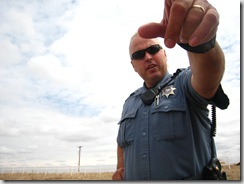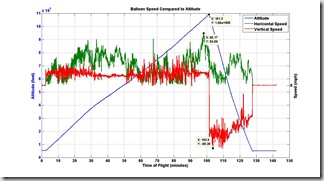You might think the South Platte River that runs through downtown Denver is dirty. And you’d be right, which is exactly why I had always avoided kayaking the whitewater drops in Confluence Park. But yesterday, the spring rains had flushed most of the junk way down river (or so I told myself), and the waves were at a perfect level for a few hours of kayak surfing in the Spring sunshine. Have a look at the video and you’ll see why I have a newfound respect Denver’s kayaking scene.
Sunday, April 25, 2010
Sunday, April 18, 2010
Pole Pedal Paddle
What do you get when you strap a camera to a ski pole, then to mountain bike handle bars, and then kayak one handed so you can film the river? You get my decidedly “recreational” entry in the 2010 Salida Pole Pedal Paddle race and you get a fun, first person view of the race course shown in the video below.
So what if I came in last or second to last place? When and where else can you get the opportunity to ski, mountain bike, and whitewater kayak all in the same day? And when and where can you actually link these three activities together sequentially in a really fun course? April in Salida Colorado, that’s when and where. And that’s exactly what the 3P organizers and around a hundred athletes do each year in this unique event. In case you couldn’t tell from the video, it is a fantastic time and I highly recommend it if you enjoy these sports.
In addition to filming throughout the course, I also carried a GPS in order to mark the route and get an idea of how fast/slow I went. You can get a sense of race course location and my speed in the interactive map below, or you can download the GPX or KML file to view in Google Earth.
Friday, April 16, 2010
History Balloon Photos

 We do our best to select launch sites and wind conditions that will provide a safe trajectory away from heavily populated areas and airspace. And we label the camera package with our contact information and non-hazardous markings. But even with all that, things don’t always go to plan and we end up confronted with a situation like this!
We do our best to select launch sites and wind conditions that will provide a safe trajectory away from heavily populated areas and airspace. And we label the camera package with our contact information and non-hazardous markings. But even with all that, things don’t always go to plan and we end up confronted with a situation like this!
It turned out that the balloon package landed in a horse corral and the shredded balloon covered the “Non” portion of the “Non-Hazardous” marking. Within 20 minutes of landing, two nice women noticed it and called the police due to the suspicious hazardous markings. Thanks to our trusty SPOT messenger, we made it there before Johnny-Law, and as Ricky Ricardo used to say, we had some esplainin’ to do. We happily shared the purpose of the mission and the joy that we witnessed when the balloon was launched in front of dozens of elementary and middle school children. We even dismantled the package to prove to the officer that we were on the up-and-up, which was sufficient for him to continue on his way. And we finally reviewed the photos with our new friends and promised that we would follow up with an email link to the photos.
 A closer examination of the GPS log showed that the balloon reached a new personal record of 109,000 feet above sea level! Be sure to check out the GPS track file with geotagged photos and the photo album of the best photos.
A closer examination of the GPS log showed that the balloon reached a new personal record of 109,000 feet above sea level! Be sure to check out the GPS track file with geotagged photos and the photo album of the best photos.
A Historic High Altitude Balloon
This morning will mark the third flight of the camera/SPOT balloon package to the edge of space in 2010. The flight is another education and public outreach (EPO) opportunity that is taking place in conjunction with the Boulder History Museum. They are working with a local middle school to film and produce a short documentary about scientists in Boulder and Lars and the atmospheric scientists at LASP fit the bill. Or maybe they just wanted some cool pictures of the edge of space. Anyway, below is the map that will update automatically with the balloon’s location after its 9am MDT launch. Enjoy!
UPDATE: This launch even got a press release in the Boulder Daily Camera newspaper!
Thursday, April 15, 2010
Tethered Balloon Flight

My initial interest in the subject goes way back to my Master’s Thesis that involved the design of a micro air vehicle control system for DARPA. The justification for the thesis work was that there is a strong need within the military (and other agencies) for visual knowledge of an environment that is best provided by an unmanned aerial vehicle (UAV). However, UAVs can be difficult to operate, so much research has been invested in developing autonomous UAVs that can operate on their own, which is exactly how I was funded for my research project.


Sometimes, things in life don’t go as planned and we have to accept them for what they are, decide to fight against them, or a little of both. When it came to this balloon project, I would like to think that I went with a little of both. First, I was fortuitous to become friends with Sam and Lars, who have helped me tremendously in literally getting this project off the ground. Second, I made the conscious choice to abandon the lost cause of a BasicStamp controlled “smart” camera system and to pursue a remote controlled camera system that was well within my means. What was amazing was that after making that choice, it only took three weeks to make the adjustments to the system, get my friends onboard with the project, and ultimately fly my gimbaled balloon camera system. You can probably begin to understand now why I am proud of this accomplishment.
Instead of explaining the as-built system in writing, I thought it would be easier to watch it in action. So check out the overview video below.
And now onto the premiere flight of my tethered balloon camera system.
As you can see from the video, I think the first flight of this system went very well. The as-built system functioned as I had hoped, but the balloon proved to be much less stable than I expected. In some ways, that actually makes things more fun, since it provides me with a justification to improve upon the system :-) It may not be the game changing invention that I dreamed of years ago, but I am glad that I dreamed and proud that I had the courage to try to make it come true.
Be sure to check out the photo album to get a sense of the quality of the photos. There are some fun ones in there! The photo below highlights the improved resolution that near earth aerial photography can provide compared to satellite imagery. Also, if you want to see this photo and two others in Google Earth, down the this KMZ file.
Wednesday, April 7, 2010
Kite Aerial Photography
 What to do on a windy April day in Colorado? How about flying a kite high above an office building with a camera dangling precariously on the kite line in a poor man's attempt to take some cool photos? That's exactly what Lars and I did yesterday in my first foray into Kite Aerial Photography (KAP).
What to do on a windy April day in Colorado? How about flying a kite high above an office building with a camera dangling precariously on the kite line in a poor man's attempt to take some cool photos? That's exactly what Lars and I did yesterday in my first foray into Kite Aerial Photography (KAP).  Considering how little effort (and thought) went into this little aerial photography experiment, I would say it went extremely well. We actually got quite a few nice photos, the best of which is an extremely crisp photo of our neighbor CASA with the Flatirons in the background.
Considering how little effort (and thought) went into this little aerial photography experiment, I would say it went extremely well. We actually got quite a few nice photos, the best of which is an extremely crisp photo of our neighbor CASA with the Flatirons in the background.  Of course, I couldn't leave it at that, so last night I set about building a Picavet suspension to hold the camera level to the ground for the next time we have some nice windy conditions here in Boulder...
Of course, I couldn't leave it at that, so last night I set about building a Picavet suspension to hold the camera level to the ground for the next time we have some nice windy conditions here in Boulder...
